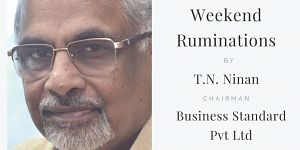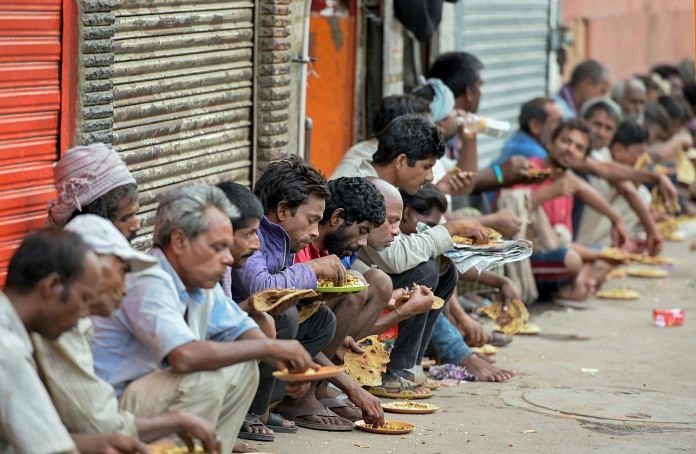Social sector spending by the poorer states remains lower than in the better-off ones. If they are to catch up, this is the opposite of what it should be.
Globally, we are living through the Great Convergence, when many of the poorer nations have been growing their incomes faster than the wealthier ones, thereby closing some of the gap between the two groups. What about convergence within the country, between the poorer and richer states? The hard truth is that there is none. Instead, there is only divergence.
 Consider tax revenue. Madhya Pradesh has half the tax resources of Karnataka (not counting transfers from the Centre), with a population that is 20 per cent bigger. UP has two-and-a-half times the population of Tamil Nadu, but broadly similar tax resources. The bottom rung is occupied by (you guessed it) Bihar, which, with a substantially greater population than Andhra Pradesh and Telangana combined, has only 12 (yes, twelve) per cent of the Telugu-speaking states’ tax resources. Odisha has half the tax resources of Kerala, but a 30 per cent greater population.
Consider tax revenue. Madhya Pradesh has half the tax resources of Karnataka (not counting transfers from the Centre), with a population that is 20 per cent bigger. UP has two-and-a-half times the population of Tamil Nadu, but broadly similar tax resources. The bottom rung is occupied by (you guessed it) Bihar, which, with a substantially greater population than Andhra Pradesh and Telangana combined, has only 12 (yes, twelve) per cent of the Telugu-speaking states’ tax resources. Odisha has half the tax resources of Kerala, but a 30 per cent greater population.
Also read: Modi govt to announce income support scheme for farmers before Union Budget
Central transfers can make up some, not all, of the inequality. MP gets two-thirds more central money than Karnataka, and Bihar 50 per cent more than the Telugu-speaking states. But per capita social sector spending by the poorer states remains lower than in the better-off ones. This is the opposite of what it should be, if the backward states are to catch up with the others. Bihar spends Rs 76 per head in a year on the social sector, while Kerala spends Rs 139. UP spends Rs 69 while Maharashtra spends Rs 120. West Bengal spends Rs 95 while Karnataka spends Rs 124. Some relatively backward states do better, like Chhattisgarh (Rs 150) and Odisha (Rs 115), but in general the pattern is skewed towards the south and west — i.e. the states that already have higher levels of attainment. These inequalities reflect even greater inequalities in private sector investment across states, the relative shares of airline flights, the availability of quality jobs, and so on. Migration provides only a partial corrective.
Inevitably, the skew in central transfers to the poorer states of the east and north is financed from the tax resources contributed by the southern and western states. So far, this has passed unnoticed. But voices of protest were heard last year when it became known that the Finance Commission (which decides on central transfers to states) may have been asked to increase transfers to the poorer states, at the cost of the states from where the bulk of the revenues come. Indeed, the introduction of the goods and services tax (GST) in 2017 had been expected to shift state GST money to the “consuming” states from the “producing” ones. This was one of the reasons why Narendra Modi as Gujarat chief minister had blocked the introduction of the GST, because he feared loss of state revenue. To everyone’s surprise, it does not seem to have worked out that way, but may well do so over time.
Meanwhile, the tinderbox issue is state-wise Lok Sabha seat allocation. This has remained frozen for nearly half a century, even as the population in the BIMARU states of the east and north has grown, relative to the south. The result today is that the average Lok Sabha constituency in Bihar has 2.6 million citizens, but only 1.65 million in Kerala; and 2.5 million in Madhya Pradesh compared to 1.84 million in Tamil Nadu. The next review of the state-wise seat allocation is due in 2026. Should a decision be taken then, that the citizen-per-seat ratio be equalised, you can expect strong protests from the south. And yet, keeping the present seat allocation frozen indefinitely would mean steadily more unequal representation across states, given that the southern states are no longer producing enough babies to sustain their population over time.
Also read: How India can get its finance ministers to stop fudging
What should be clear is that the two issues — equalisation of state finances and of Lok Sabha representation — cannot be addressed simultaneously, lest a spark be lit and start a fire. Yet persisting with the inequalities, indeed seeing them get worse, is no one’s prescription for national unity. Will fudging the issues be a solution? Only for a while, but it will buy time.
By Special Arrangement with Business Standard




I’m surprised Mr Nainan with all his experience, is talking about redistribution as a means to extract people out of poverty.
When the distributable surplus is so less and population so huge, just how much will the per capita dole be?
What makes the South more developed is the fact that they industrialised earlier. Or realised the importance of education earlier.
The size of the economy of the BIMARU states needs to increase and that can happen only when businesses are allowed to grow, not exploited or forced to operate illegally. Rule of law is required. A level playing field for everyone. Minimal government and maximum governance through simplified e-processes.
These are things the northern states are far far from.
Agree with the points put forth by Srikanth JS, probably these are the reasons why most of the migration takes place from northern part of India. The Northern states should come out of the clutches of bloated and false ego of culture. They should give importance to education and promote scientific temper among the public.
Yes, but not by government intervention. Even a mother can not distribute her naseeb equally between her children, much less a government seated in Delhi that preemps such a large share of national resources simply to sustain itself. No special packages for either Bihar or Andhra. The people of each state must learn to be better educated, more industrious, enterprising. 200 million of them should not place their fate in the hands of a man like Yogi Adityanath.
Absolutely correct.
This seems to be a pattern across globe. Relatively wealthier and prosperous countries in Europe and North America, Australia having lower population growth and people migrating from poorer nations. It could partially be blamed on Colonialism etc., but what would be the excuse for within country disparities ?
Here are some hypothesis :
1. High levels of corruption and violence (low levels of private investment)
2. Lack of respect for property rights
3. Lack of value given to Education (relative to southern states, especially Telugu-speaking)
4. Utter lack of respect and sense towards fellow humans on road while in traffic or otherwise (arrogant and always ready to abuse/fight instead of civic response)
I know I might be broadly generalizing, but deep Cultural Issues are major part of poverty, violence, lack of opportunities within the country/among nations.
Culture that encourages science, reason, human rights, policies that are judged on outcomes rather than initial intent, politicians that see power as a responsibility instead of a self-serving opportunity could be a start.
We need a 50 page revision of our constitution based on solid foundational principles and leave the details of law making and enforcing to states, with only most necessary functions of Defense/Railways etc should be left to Central Govt.
Here is a rule : Any job that cannot be accounted for on a daily basis should not be under Govt. State or Central.
Defense, Railways, Public Transportation etc can be (We immediately know if it is not working)
Bureaucracies, institutions that are unaccountable and takes decades to even think of reforming should be abolished or atleast be brought under States control.
We need to talk about root causes and solutions, not attempting to cure symptoms-they never go away.
Using “culture” as the sole mechanism to explain the relative ” backwardness” of the eastern states is essentially an attempt at blaming the victim. Any serious analysis needs to consider all factors – including, for example, the impact of freight equalisation and lop-sided industrial licensing policies on the economy of these states. It is downright dangerous to use “culture” in an attempt to find the root cause of economic backwardness of a region as one tends to gloss over the problems these regions have had to deal with.